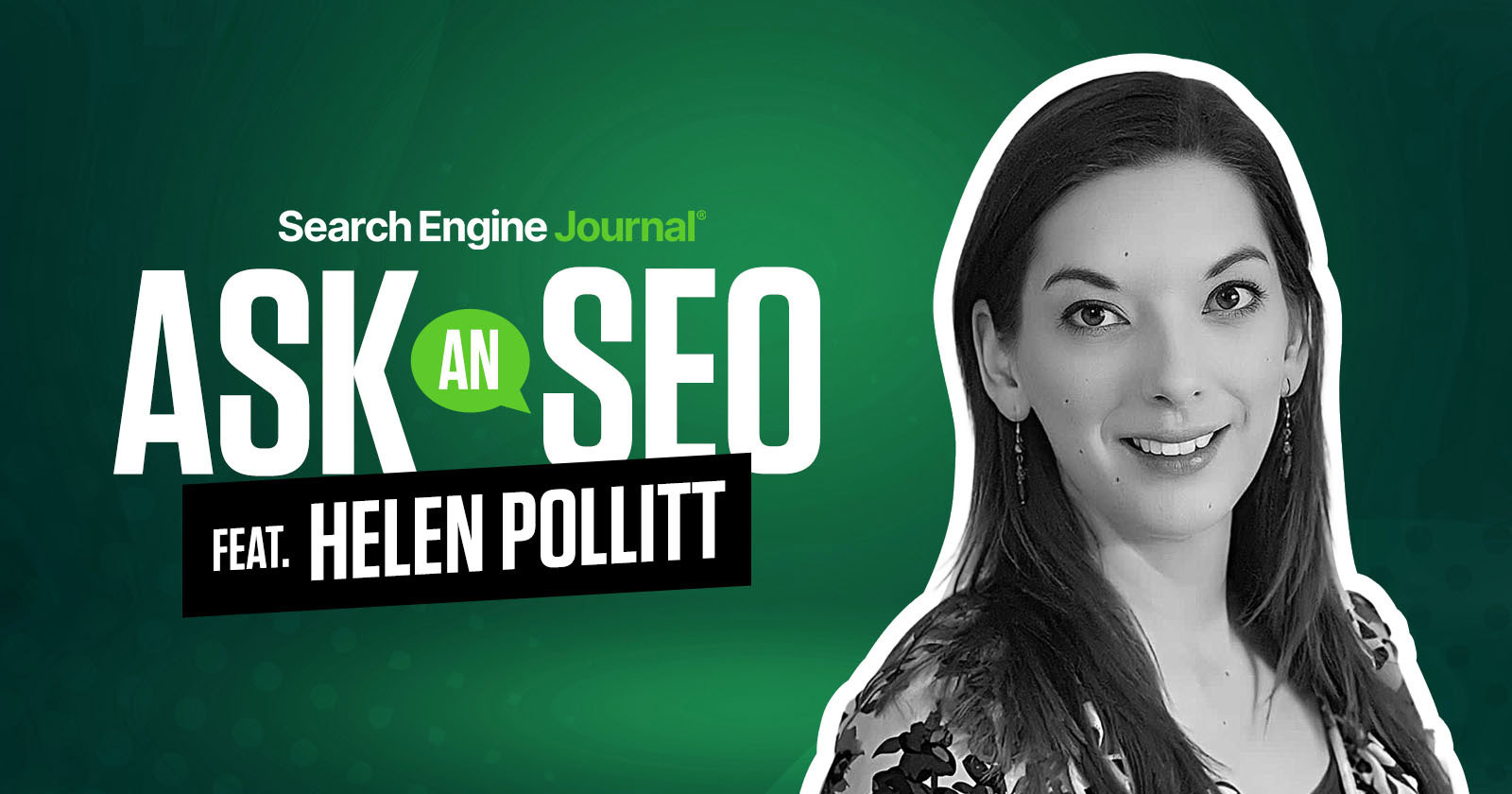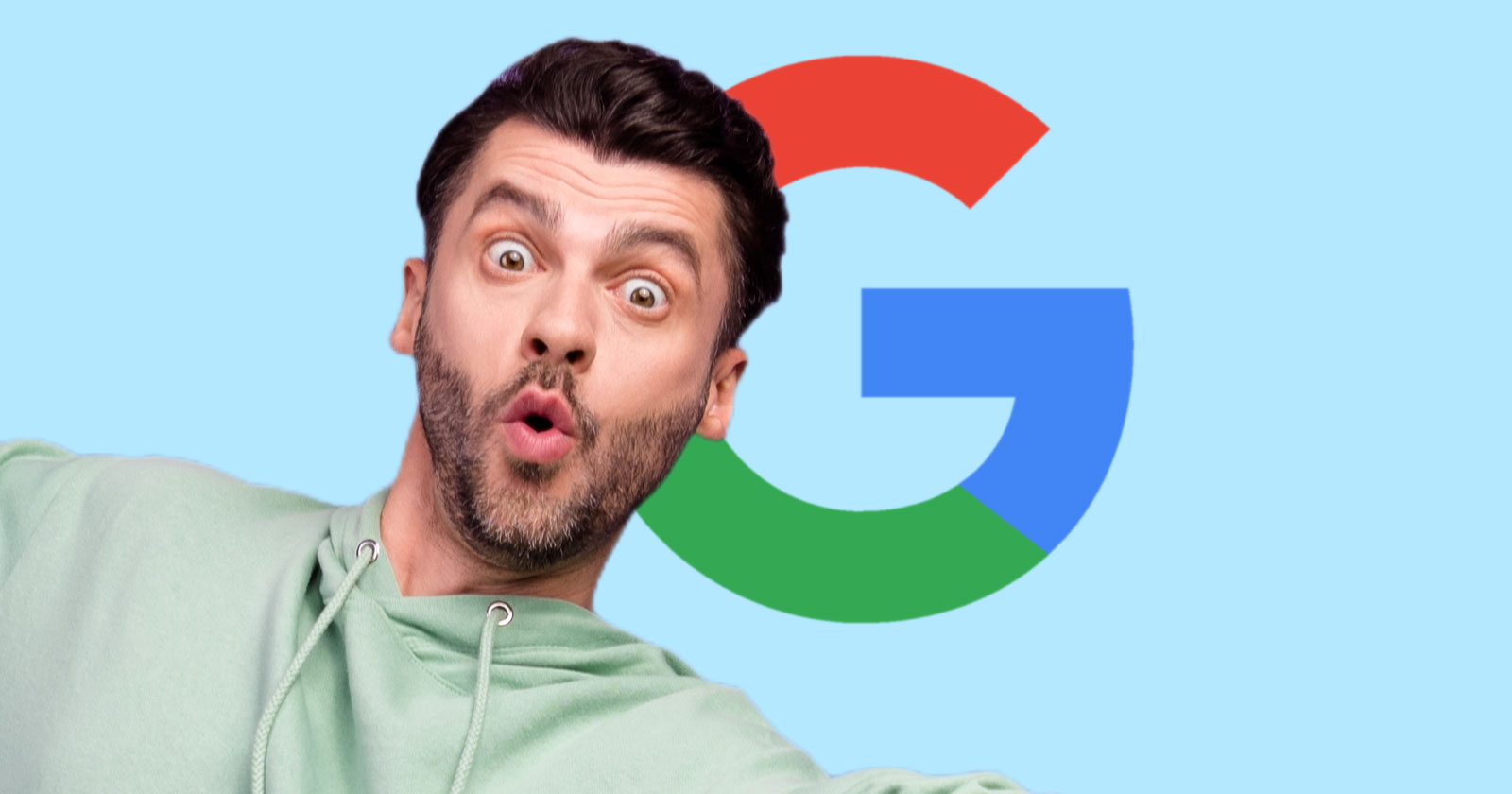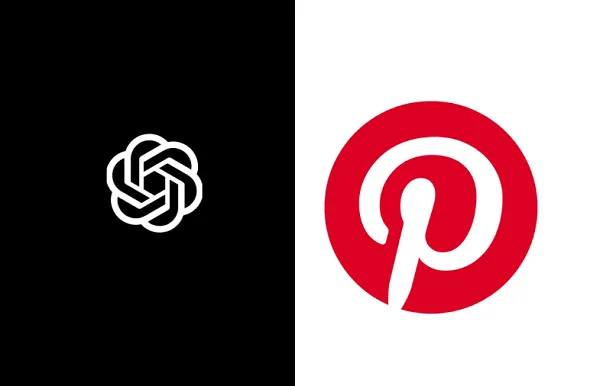How Much Does Google Ads Cost? (2025 Data + Insights)
I analyzed over one million keywords across 10 industries. The average cost per click (CPC) for Google Search ads in 2025 is $8.34. And the median CPC is $4.52. Legal had the highest average CPC at $22.75. Ecommerce had...

I analyzed over one million keywords across 10 industries.
The average cost per click (CPC) for Google Search ads in 2025 is $8.34. And the median CPC is $4.52.
Legal had the highest average CPC at $22.75.
Ecommerce had the lowest, at just $0.82 per click.

But there’s no flat rate for CPC.
Even if two advertisers bid on the same keyword, they won’t pay the same.
Costs can vary based on several factors — and CPC is just one part of the equation.
Google Ads pricing also involves other expenses that can affect your total budget.
In this guide, you’ll learn:
How much Google Ads really cost What your budget should be How you can lower your ad costs (without hurting results)Let’s dive in.
How Much Does a Google Ad Cost?
Google Ads can cost anywhere from $500 to $100,000 per month.
There’s no fixed rate. And CPCs can change from year to year based on competition and demand in your industry.

That’s why you set the budget that makes sense for your goals.
When I worked at marketing agencies, I’d see brands start with as little as $200 per month.
But in most cases, that isn’t enough to generate real data to measure performance, optimize targeting, or drive consistent leads.
It’s recommended to start with at least $500 a month.
I asked Sam Maugans (a PPC Director and Business Owner, FourHorse Digital LLC) how much does it cost for Google Ads. He said:
I talked to other experts as well.
Here’s what a typical monthly budget looks like, based on business size:
Small business: From $500 to $5,000 per month Mid-size business: From $5,000 to $50,000 per month Large business: From $25,000 to $100,000+ per monthIn the end, what you spend depends on how aggressive your goals are.
If you want more clicks and leads, you’ll need a larger budget to reach enough of the right people.
You can’t expect to generate 100 high-quality SaaS leads with just $500 a month. That kind of reach takes more spending.
And remember, not all clicks are equal.
A higher CPC can still be worth it if it brings in better-quality leads that are more likely to convert.
What You’re Paying for With Google Ads (and Why It’s Not Fixed)
Google doesn’t charge you to show your ad.
You only pay when someone clicks. That’s why it’s called pay-per-click (PPC).
This model mainly applies to Search ads, where you bid on keywords.

But other ad formats (like Display, YouTube, and Shopping) use different pricing.
Some charge you per view. Others per 1,000 impressions.
(We’ll cover this when we break down campaign types later in the guide.)
Still, all of them run on one thing: Google’s ad auction.
Every time someone searches, there’s a lightning-fast auction to decide whose ad shows and what they pay for that click.

For example:
Let’s say someone searches “divorce lawyer near me.” And they click on a Google search ad.
That single click could cost around $8.43 in the U.S.

But if they search for something like “dog groomer near me,” that click might only cost $1.35.

Same platform. Same system. Very different costs. Because the value of each click is different.
But here’s the thing:
You don’t always pay the amount you bid.
When you run a campaign, you set a maximum bid, which is the most you’re willing to pay for a click.
But what you pay is usually less.
That’s because Google’s auction considers more than just your bid when deciding which ad shows up and at what price.
So, what affects the cost of Google Ads beyond your max bid?
Let’s break down the seven biggest factors.
Factors That Impact Your Cost Per Click
How much Google Ads costs isn’t set in stone.
Your CPC can change dramatically depending on these seven factors:
Your Industry
Your cost per click depends heavily on the industry you’re in.
When I analyzed over one million keywords across 10 industries, the differences were huge.
Some industries consistently came in high. Because the value of a single lead is massive.
Others stayed low, likely due to lower margins or less commercial intent.
Here’s a breakdown of the average and median CPC for each industry in the dataset:
| Legal | $22.75 | $8.00 |
| Finance | $11.25 | $6.43 |
| SaaS / Tech | $10.14 | $6.68 |
| Home Services | $8.86 | $5.82 |
| Marketing & Advertising | $8.33 | $6.18 |
| Education / Online Learning | $8.21 | $4.87 |
| Automotive | $5.90 | $2.01 |
| Health & Wellness | $5.50 | $3.98 |
| Real Estate | $1.65 | $0.60 |
| Ecommerce / Retail | $0.82 | $0.63 |
To put that into perspective:
A click for “dog bite lawyer san jose” costs around $229.

A click for “keto diet nutritionist” costs about $0.85

That’s not just a pricing difference. It reflects the value of a lead in each industry.
If you’re in a high-cost niche like legal, finance, or SaaS, you’ll need a bigger budget to compete.
But if you’re in ecommerce or real estate, your clicks are cheaper. And you can start smaller.
The Types of Keywords You Target
Different types of keywords affect how much you pay.
They vary by:
Intent: Is the person ready to buy, or just looking for information? Length: Broad terms vs. long, specific phrases Match type: How closely a search needs to match your keywordBroad, generic terms like “plumber” are comparatively affordable.
But, they’re less targeted. And often trigger your ad for searches that don’t match what you offer.

More specific terms like “emergency plumber in Chicago” tend to cost more.
But those clicks are from people who are ready to take action.

Match types also affect your cost:
Broad match: Your ad can show for related terms, even if they don’t match exactly Phrase match: Your ad shows when the search includes your exact phrase Exact match: Your ad only shows for that specific keyword (or close variations)Broad match usually brings cheaper clicks, but lower-quality traffic.
Exact match costs more, but tends to drive better results.
The more specific your targeting, the higher your cost per click is likely to be.
But you’ll waste less budget and attract people who are actually ready to buy.
That’s why keyword type plays a major role in how much an ad costs on Google.
Location and Device Targeting
Where your ad runs — and on which device it appears — can affect your cost per click.
Targeting a competitive city usually means higher bids.
For example, the search term “plumber near me” costs $62.67 per click in Austin, Texas.

In Lincoln, Nebraska, that same keyword costs just $20.11.
Why?
Fewer advertisers. Less bidding. Lower CPC.

Similarly, device targeting affects cost as well.
Google Ads lets you set different bids for mobile, desktop, and tablet traffic.
Each device type can have its own CPC, depending on competition and performance.
For instance, if more advertisers are targeting mobile, clicks on mobile can cost more.
Or, if desktop traffic converts better in your industry, advertisers may bid higher there, which results in higher CPC.
Campaign Type (Search, Display, Shopping, YouTube)
So far, I’ve focused on Search ads, where you bid on keywords and pay when someone clicks.
That’s the most common format.
In fact, when most people say “Google Ads,” they’re usually talking about Search.
But Google Ads includes other campaign types too. And they’re priced differently.
With YouTube ads, your video can appear before, during, or after another video on YouTube.
You usually pay when someone watches a part of your ad. This is called cost-per-view (CPV).

Display ads are shown across Google’s Display Network, which includes websites and apps that run Google ads.
They’re often priced by impressions.
You’re charged per 1,000 views of your ad. Even if no one clicks.

Shopping ads show up in Google search results. But instead of text, they pull product images, prices, and titles from your product feed.
These ads are click-based, like Search. So, you pay every time someone clicks on it.

Each campaign type targets people differently. And Google Ads pricing varies depending on whether you’re running search, display, shopping, or YouTube ads.
That’s why your campaign type has a direct impact on how much you’ll pay.
Your Quality Score
Google doesn’t just look at your bid. It also scores the quality of your ad.
This is called Quality Score — a number from 1 to 10 that Google assigns to each keyword you target.
It’s based on:
Expected click-through rate (CTR) How relevant your ad is to the keyword Your landing page experienceEach factor is graded as “Above average,” “Average,” or “Below average” compared to all other advertisers on Google Ads.
These ratings combine to form your overall Quality Score.

The higher your score, the less you pay for the same position.
The lower your score, the more you’ll need to bid to compete.
That means two advertisers can target the same keyword, but the one with the better ad and landing page might pay less per click.
This shows how much Google Ads costs is influenced by far more than your bid.
Your Bidding Strategy
Google Ads gives you two main ways to bid: manual or automated.
With manual bidding, you set the maximum amount you’re willing to pay for a click.
It works best when you already have historical data and know your ideal CPC. You’re in full control, but it takes more time to manage.
With automated bidding, you let Google set your bids based on your goals.
It tends to work better at scale, once Google has enough data to optimize toward those goals. That could be getting the most clicks, driving more conversions, or hitting a target cost per lead.

Here are the most common automated strategies and when to use them:
Maximize Clicks: Good for driving traffic quickly, especially in early testing Maximize Conversions: Best when your goal is to get as many leads or sales as possible within budget Target CPA: Works well when you know your ideal cost per lead or sale Target ROAS: Best for ecommerce or campaigns where revenue tracking is set up, and you want to hit a specific returnIf Google sees strong signals that a searcher is likely to convert, it may raise your bid automatically. Which can lead to higher CPCs.
Manual gives you more control. Automated gives you speed and scale.
The more control you want, the more work it takes. But giving up control may mean paying more.
Either way, your bidding strategy directly impacts what you pay. And how efficiently your budget gets spent.
How Your Account Is Set Up
Here’s a basic structure of a Google Ads account:
You create a campaign.
Inside that campaign are ad groups.
Each ad group includes a set of keywords, a specific ad, and a matching landing page.

Why does this matter? Because Google ranks your ad based on a combination of factors, including relevance.
And relevance depends on how tightly those elements match.
Let’s say you run one ad group for all your services: plumbing, HVAC, and electrical.
You use one ad and one landing page for all of it.
To Google, that looks messy. The ad isn’t specific. The landing page isn’t focused.
Someone searching for “emergency plumbing repair” sees a generic ad for “Plumbing, HVAC & Electrical Services.”
They land on a page trying to cover everything at once.
Relevance drops. So does your Quality Score. This results in a higher cost per click.
Now take the same budget and split those services into separate ad groups. Each with its own focused keywords, ad, and landing page.
Suddenly, your ads are more relevant. And Google rewards you with lower CPCs.

Other Costs Beyond Your CPC
Running Google Ads often comes with expenses outside of what you pay per click.
These can add up quickly:
Tools and software: Keyword research platforms, landing page builders, or call tracking tools can cost $50–$300+ per month, but they help improve campaign performance Creative assets: Copywriting, landing page design, graphics, or video production. High-quality creative can boost CTR and conversions, but may require a few hundred to several thousand dollars. Management fees: Whether you hire a freelancer, agency, or in-house specialist, expect to budget $100 to $10,000+ monthly, depending on scopeHow Much Should You Budget for Google Ads?
Start with a test budget.
Many small businesses begin with $500 to $5,000 in their first month.
That’s usually enough to get real traffic, measure early performance, and understand what’s working.
Set a number you’re comfortable testing. Then, apply that as your monthly cap inside Google Ads.
For example, $900 = $30/day.
But be cautious not to spread your budget too thin, says Kalo Krastev, Team Lead Performance Marketing (SEA) at ImmoScout24
Let’s say you spend $1,000 and get 250 clicks.
If your site converts 1 in 25 visitors, that’s 10 customers at $100 each.
If your average sale brings in $300, that’s a 3X return.
If your numbers look good, increase your monthly budget by 10-20%. (That’s enough to grow your reach without overspending too quickly.) If performance is weak, don’t increase the budget. Instead, review your targeting, ad copy, and landing page to find what’s holding things back.Once your campaign is converting reliably, scaling up becomes simple.
You’ll know what you’re paying to get a customer. And how much more can you spend to get more of them.
As you scale, be careful not to bleed cash.
Here are some signs that you’re overspending on Google Ads:
Cost per lead or customer is higher than your profit margin You’re paying for clicks on irrelevant keywords Campaigns run 24/7, but most conversions happen at certain times CTR is dropping while spend stays the same or increases
If you spot these, analyze your campaigns and take steps to lower the cost. Start with the tactics in the next section.
6 Ways to Lower Your Google Ads Costs
Spending more doesn’t always get you better results.
In fact, most small businesses overpay for clicks without realizing it.
I saw this all the time with the agency clients — campaigns wasting money on keywords or placements that had no chance of converting.
The good news?
You can bring your costs down without turning off campaigns or cutting corners.
Here are six ways to do that:
1. Improve Quality Score
Google Ads uses Quality Score to assess the quality of an ad.
Improving this score can help lower your cost per click.

Relevance is a big part of the equation.
Your ad should match what the person is searching for — both in wording and intent.
For example, someone searching for “roof leak repair” is more likely to click on an ad that says “Roof Leak Repair: Book a Local Pro” than something generic like “Plumbing and Roofing Services.”
You can also make your ad more clickable by adding assets like site links, callouts, or structured snippets.
These help your ad stand out in search results and attract more qualified clicks.

Your landing page needs to deliver a good experience, too.
It should load fast, work well on mobile, and convey the same message.
If the page feels off-topic or slow, your score drops and your costs go up.
When your keyword, ad, and landing page all align, it may increase your Quality Score and lower your CPC.
2. Use Negative Keywords to Stop Paying for Useless Clicks
Not every click is a good click.
Your ad might show up for searches that sound relevant, but aren’t.
For example: You sell premium leather sofas, but your ad shows for “free leather sofa giveaway.”
Someone clicks, you pay…and they bounce.
Negative keywords help you block that.
They tell Google: “Don’t show my ad if this word is in the search.”
Before you launch, consider adding common negatives like:
“jobs” (people looking for employment) “template” or “example” (informational searches) “how to” (DIY intent) “free” (no intent to buy)Here’s how adding “free” as a phrase match negative keyword blocks irrelevant searches:

Take some time to identify more negative keywords that are irrelevant to your offering and may not lead to conversions.
After your ads run, check the “Search terms” tab inside Google Ads.
It shows a list of terms that triggered your ad.
If you see anything that doesn’t match your offer, looks irrelevant, and has low conversions, add it to your negative keyword list.

3. Focus on Long-Tail Keywords with Higher Intent
Long-tail keywords are longer, more specific search phrases — usually 3 to 5 words.
And unlike short, generic keywords, they make it clear what the searcher actually wants.
Think:
“roof leak repair near me” instead of just “roofing” “tax accountant for freelancers” instead of “accountant”These get fewer searches.
But they’re cheaper, have less competition, and usually convert better.
Why?
Because someone searching for a long-tail keyword is further along in their journey. They’re not just browsing. They’re ready to act.
So, instead of going after broad, high-cost terms, focus your budget on these high-intent searches.

You can use Semrush’s Keyword Magic Tool to find long-tail keywords.
Open the tool, enter your seed phrase (e.g., “roof repair”), choose your target location, and click “Search.”

You’ll see a long list of keyword ideas.

Next, we’ll narrow it down using filters.
Phrase Match: This keeps results closely related to your original phrase KD %: Set “To” as 29 to filter for low-competition keywords Advanced filters > Word Count: Set “From” as 3 to show only longer phrases Intent: Choose “Commercial” and “Transactional” to focus on buyers Exclude keywords: Remove irrelevant terms like “free” or “jobs”
Now you’re looking at a refined list of long-tail, high-intent keywords.
This is how you avoid broad, expensive clicks. And focus your budget on searchers who are ready to act.
4. Target Specific Locations to Lower Competition
One of the easiest ways to waste money on Google Ads?
Targeting a too-broad area.
If you’re a local business (or serve just a few regions), you don’t need your ads to show in places you don’t operate.
Running ads across a large area means more competition.
But narrowing your location targeting often leads to lower CPCs and better leads.
For example: Instead of targeting all of Texas, narrow it down to just the Dallas-Fort Worth area.
You’ll avoid competing with advertisers in Houston, Austin, and San Antonio — who are all bidding on the same keywords.
Same campaign. Same budget. Less competition.
Inside Google Ads, you can target by city, region, zip code, or even a radius around your address.

Start by focusing your budget where your best customers are.
You’ll cut waste and make your ad spend go further.
5. Run Ads When Your Customers Are Most Likely to Convert
Google’s Smart Bidding is smart, but it’s not magic.
If you’re running ads 24/7, it won’t automatically stop spending at 2 a.m. — even if those clicks rarely turn into customers.
That’s where ad scheduling comes in.
If you run a local business or only serve customers during specific hours, you don’t want to pay for clicks when no one’s around to respond.
For example:
If you’re a plumber or accountant and someone clicks your ad at 11 p.m., but your office opens at 9 a.m., they’ll probably move on before you can follow up.
In Google Ads, you can set your campaign to only run during your business hours.

You can also use the “Hour of the day” report to see exactly when conversions happen. So you can schedule your campaign based on real performance data.

Once you’ve got data, you can expand to early mornings or weekends if performance is strong.
Less waste. Better timing. Same budget.
6. Test Your Landing Pages to Maximize Budget
If you’re getting 100 clicks and only 2 leads, that’s not a CPC problem.
That’s a landing page problem.
The best ad in the world won’t help if the page people land on doesn’t convert.
I’ve worked with clients where we didn’t change the ad at all. Just added a few bullet points near the top of the page.
That one small tweak doubled their conversion rate.
Small changes like that can make a big difference in how many leads you get from the same ad spend.
For starters, you can tweak different parts of your landing page: the headline, form length, call to action, or how quickly your value is explained.
Here’s a simple landing page template to capture leads:

You can also add trust signals to make visitors feel safe enough to convert, like:
Customer reviews Media mentions Money-back guarantees Security badgesIf you want to go further, create two versions of your landing page: Version A and Version B.
Change just one thing between them.
Then, send traffic to both and see which one gets more leads.
When your conversion rate increases, your cost per lead goes down. This increases your ROI.
What to Do Before You Launch Your First Google Ads Campaign
Google Ads can feel simple on the surface: set a budget, write an ad, go live.
But if you skip a few key steps before launch, your budget can disappear fast.
I’ve seen businesses launch campaigns without setting up conversion tracking.
Some forgot to set their location targeting and showed ads in cities they don’t even serve. Others launched without a daily budget cap and burned through hundreds in a single day.
Small misses like that lead to wasted clicks, high costs, and zero results.
That’s why I created a pre-launch checklist.
It walks you through the exact steps to take before your first campaign goes live across Search, Shopping, Display, and YouTube.

Ready to Create Your First Google Ad Campaign?
Start with a small, focused budget.
Use month one to get clicks, see what’s working, and spot what’s not.
Then, improve from there based on real data.
Use our Google Ads Budget Estimator to calculate your starting budget.
And once you’re ready to launch, use our Pre-Launch Checklist to set up your campaign the right way.
Check out this guide for the next steps: How to Run Google Ads: A 10-Step Guide
Backlinko is owned by Semrush. We’re still obsessed with bringing you world-class SEO insights, backed by hands-on experience. Unless otherwise noted, this content was written by either an employee or paid contractor of Semrush Inc.

 Tfoso
Tfoso 































